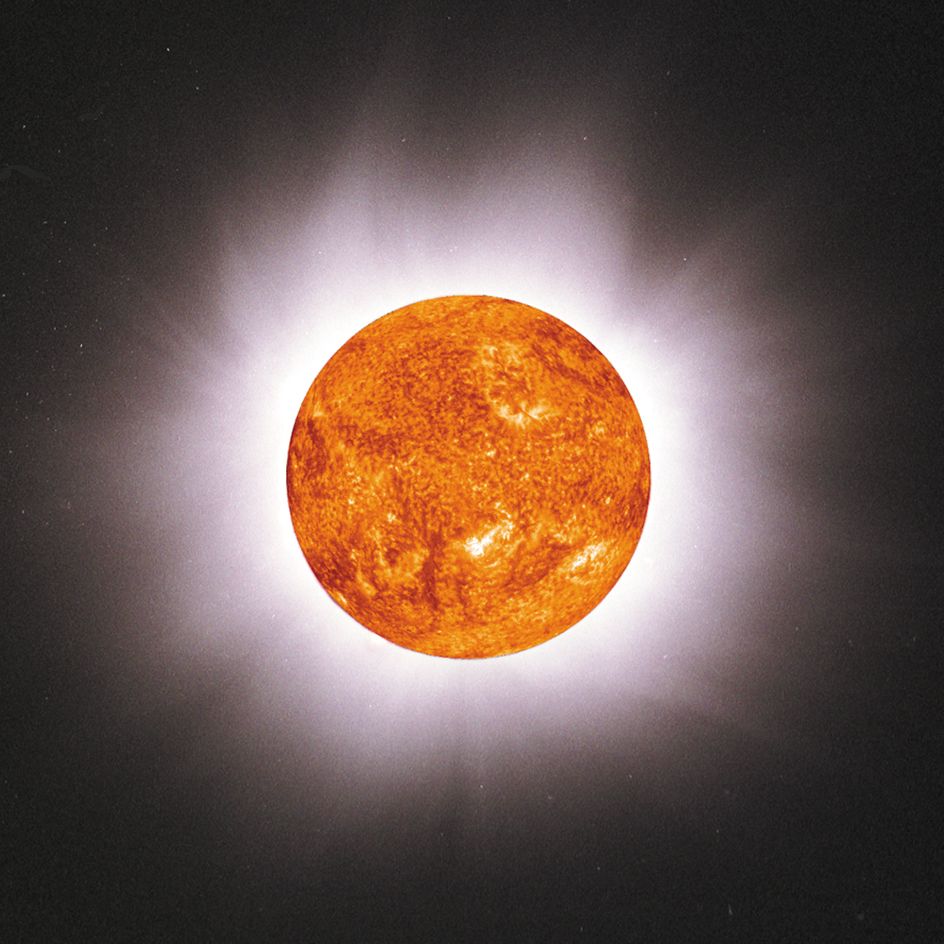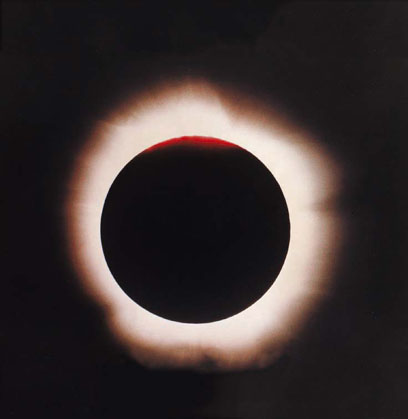Eclipse is the darkening of a heavenly body. It occurs when the shadow of one object in space falls on another object or when one object moves in front of another to block its light. A solar eclipse takes place when the sun appears to become dark as the moon passes between the sun and Earth. A lunar eclipse occurs when the moon darkens as it passes through the Earth’s shadow.
Heavenly bodies other than Earth and the moon also can eclipse each other. The planet Jupiter sometimes blocks sunlight from its moons. Likewise, Jupiter’s moons sometimes cast shadows on the planet. Sometimes the moon or some other heavenly body blocks light from a planet or a distant star. Astronomers use the term occultation for this blocking action. Astronomers also refer to a certain kind of variable star as an eclipsing binary (see Star (Binary stars)). An eclipsing binary consists of two stars that revolve around each other so that each periodically blocks the light from the other. This article discusses chiefly lunar and solar eclipses.
When eclipses occur.
Earth and the moon always cast shadows into space, and the moon orbits Earth about once every month. But an eclipse—either solar or lunar—does not occur every month. The moon’s orbit is tilted about 5° to Earth’s orbit around the sun. For this reason, the moon’s shadow generally misses Earth, and so a solar eclipse does not occur. Likewise, the moon most often escapes being eclipsed by passing above or below the shadow of Earth. Thus, a solar or a lunar eclipse can occur only when Earth, sun, and moon are in nearly a straight line.
Astronomers can predict eclipses with great accuracy. At least two solar eclipses and as many as three lunar eclipses may be seen each year from various places on Earth.
Loading the player...Eclipses
Solar eclipses
occur when the moon’s shadow sweeps across the face of Earth. The shadow usually moves from west to east across Earth at a speed of about 2,000 miles (3,200 kilometers) per hour. People in the path of the shadow may see one of three kinds of eclipses. A total eclipse occurs if the moon completely blots out the sun. If the moon is at its farthest point from Earth when a total eclipse occurs, the eclipse may be only an annular eclipse. In such an eclipse, the moon darkens only the middle of the sun, leaving a bright ring around the edges. A partial eclipse occurs if the moon covers only part of the sun.
A total solar eclipse is one of nature’s most impressive sights. The dark moon appears on the western edge of the sun and moves slowly across the sun. At the moment of total eclipse, a brilliant halo flashes into view around the darkened sun. This halo is the sun’s outer atmosphere, the corona. The sky remains blue but darkens. Some bright stars and planets may become visible from Earth. After a few minutes, the sun reappears as the moon moves off to the east. The period when the sun is totally darkened may be as long as 7 minutes 40 seconds, but it averages about 21/2 minutes.

A total solar eclipse can be seen only in certain parts of the world. These areas lie in the path of totality, the path along which the moon’s shadow passes across Earth. The path of totality is never wider than about 170 miles (274 kilometers).
A partial solar eclipse or a partial phase of a total eclipse should be viewed only with special filters that cut the solar light to a safe level. Sunglasses and smoked glasses do not provide enough protection.
You can also view the sun indirectly with a pinhole projector—two pieces of cardboard, one with a small hole punched through it. Hold this piece so that sunlight passes through the hole and casts an image on the other piece. Spaces between tree leaves can also serve as pinholes, casting images on the ground.
Loading the player...
Eclipse

A total solar eclipse can be viewed safely without protection only when the disk of the sun is completely hidden and only the corona is visible. The corona is no brighter than a full moon.
Lunar eclipses
take place when the moon passes through the shadow of Earth. A total eclipse occurs if the entire moon passes through Earth’s shadow. A partial eclipse occurs if only part of the moon passes through the shadow. A total lunar eclipse may last up to 1 hour 40 minutes. A lunar eclipse may be seen by most of the people on the night side of Earth. There is no danger in viewing a lunar eclipse.
The moon does not become completely dark during most lunar eclipses. In many cases, it becomes reddish. Earth’s atmosphere bends part of the sun’s light around Earth and toward the moon. This light is red because the atmosphere scatters the other colors present in sunlight in greater amounts than it does red.
The study of eclipses.
Eclipses have fascinated people for thousands of years. The ancient Chinese thought solar eclipses occurred when a dragon in the sky tried to swallow the sun. Modern astronomers have learned much by studying eclipses. They have observed solar eclipses to determine the exact relative positions of Earth, sun, and moon. In 1939, astronomers observed that the moon’s surface cooled extremely rapidly during a lunar eclipse. For this reason, they theorized that the moon is covered by a layer of fine dust. This theory was proved correct by space probes on the moon in the 1960’s. Astronomers have also observed eclipses to study possible changes in the strength of gravity and the size of the sun.
Measurements of the sun’s corona and certain kinds of other studies can be made best during a total solar eclipse. The famous physicist Albert Einstein claimed in his theory of general relativity that light from stars beyond the sun bends slightly from a straight path as it passes the sun. Normally, the bright glare of the sun drowns out starlight passing near the sun. But this light can be photographed during a total solar eclipse. Photographs taken during an eclipse in 1919 strongly supported Einstein’s theory.
Astronomers study eclipses by heavenly bodies other than Earth and moon. They have determined the size of distant stars by observing eclipsing binaries.
In 1675, Danish astronomer Olaus Roemer used observations of eclipses of Jupiter’s moons to show that light travels at a finite (limited) speed and to measure this speed. Jupiter eclipses its moons when the moons pass behind that planet as seen from Earth. Roemer noted that the time at which an eclipse becomes visible depends on how close Earth is to Jupiter. The eclipse becomes visible later when Earth is relatively far from Jupiter than it does when Earth is relatively close to Jupiter. However, the actual eclipse is not “late.” The light merely takes more time to reach Earth. Roemer’s measurement was within 25 percent of the actual speed of light.
